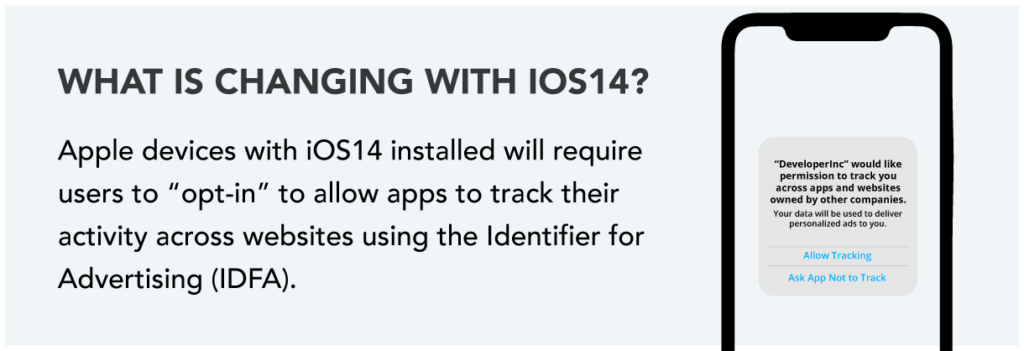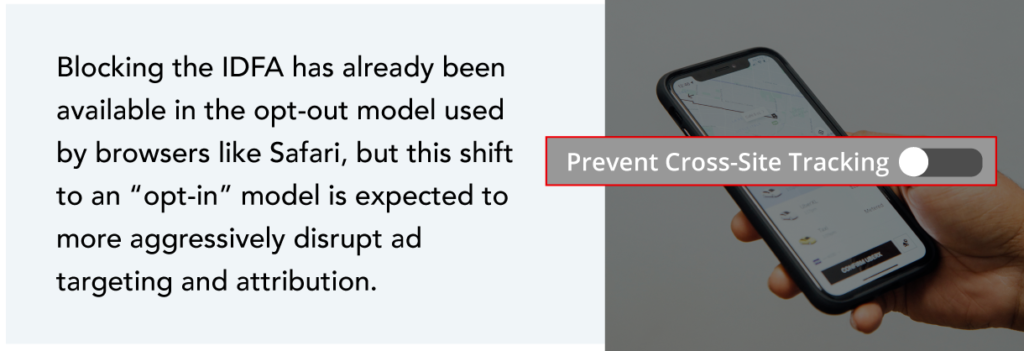As we move into the changing landscape created by iOS14, we are following other platforms closely and assessing the next best direction for advertising efforts and meaningful data usage. This move may stifle an advertiser’s ability to focus their promotional efforts on target audiences. We think it may, however, open up new opportunities for industry innovation.
Our team will be continuing to share information on iOS14 and how it impacts advertising in the coming weeks.
But first, read on for a quick snapshot of iOS14 and how it impacts IDFA’s.

What is changing with iOS14?
Apple devices with iOS14 installed will require users to “opt-in” to allow apps to track their activity across websites using the Identifier for Advertising (IDFA). According to Apple, tracking can be considered as:
- Displaying targeted advertisements in your app based on user data collected from apps and websites owned by other companies.
- Sharing a list of emails, advertising IDs, or other IDs with a third-party advertising network that uses that information to retarget those users in other developers’ apps or to find similar users.
- Placing a third-party SDK in your app that combines user data from your app with user data from other developers’ apps to target advertising or measure advertising efficiency, even if you don’t use the SDK for these purposes. For example, using an analytics SDK that repurposes the data it collects from your app to enable targeted advertising in other developers’ apps.
What is the IDFA?
IDFA (Identifier for Advertising): IDFA ties a unique identifying number to each device allowing advertisers to track behaviors and interactions with ads and within the app without revealing any personally identifying information.
Who does this impact?
These changes will apply to users who have installed iOS 14 (about 60% of smartphone users in the U.S. and 25% worldwide have Apple devices as of this writing). As of early 2021, 86% of iPhone users had already installed iOS14 on their device. As for companies, you will see a change if you:
- Advertise using third-party placements such as the Facebook Audience Network. These are ads that show up outside of Facebook’s own platforms like Facebook, Instagram, Messenger, and Marketplace.
- Advertise using app install objectives. This objective is reliant on the IDFA which users will be able to block.
Blocking the IDFA has already been available in the opt-out model used by browsers like Safari, but this shift to an “opt-in” model is expected to more aggressively disrupt ad targeting and attribution.

What is the alternative to IDFA?
Instead of using IDFA, Apple has released the SKAd network. SKAd is an API for mobile install attribution which will not share device or personal data. Some features of the SKAd network are:
- Only provides click-based attribution (last click specifically)
- No real-time reporting. Conversion data will have a 24-48 hour latency period and will be released to advertisers in batches
- No date/time stamp on conversion data
- Fixed attribution window of 30-60 days
- No access to demographic data like age or gender
What are advertisers doing?
If you are concerned about how your advertising is being effective, we can help. Our team is rolling out custom solutions for our clients as each is impacted differently by iOS14. We are ready to help you go into this next stage of online advertising. Contact us today to learn more.

